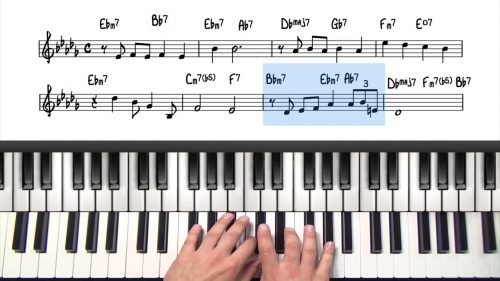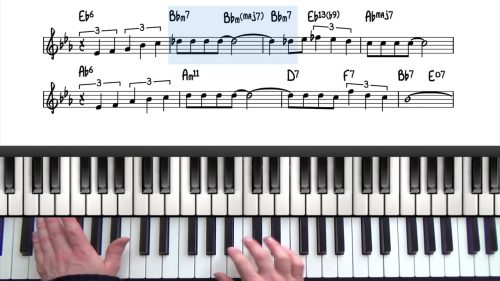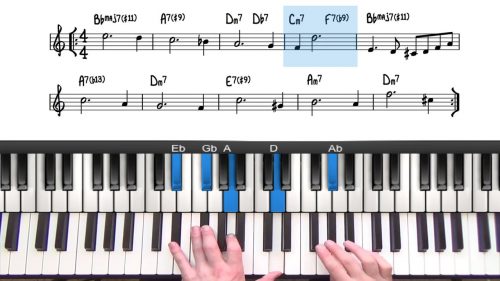Passing Chords Tutorial
Passing chords can be viewed as temporary stepping stones between chords in a progression. When used correctly, passing chords add harmonic variety and make your playing sound more interesting and dynamic.
Passing chords do not have to be in the key you are in and in fact, they are often more effective when the chord is not in the key you are in. In this lesson we will are going to apply passing chords to a major 251 and also in context to a few different jazz standards.
A very common type of passing chord is a chromatic passing chord built a half step above or a half the target chord. In particular, a dominant chord a half step above will always lead very nicely onto the target chord.
Lesson Downloads
-
Upper Structure Cheat Sheet File Type: pdf
Practice Tips
-
First take the major 251 progression and try adding a dominant passing chord a half step above the 1 chord.
-
Repeat the same process with the minor 251 progression.
-
Remember that you can also add alterations and upper structure triads to the dominant passing chords to create more tension and strengthen the sense of resolution.
- Apply this technique to the jazz standards you are working on - this is a process of trial and error, you will find combinations that work, combinations that don't work and this is part of the learning process.








Nice tutorial, I have also a tutorial like this, I want my student to become a great pianist in the future, Thanks for the tutorial..!
Nice post here, I’d like you deliver the tutorial, I will be learning more from online piano tutorials, I have my own piano, yamaha brand, and I playing it when I have time., thanks..!
Minute 3.58 thats an upper structure working as a passing chord
passing chords in Night & Day: Why not to substitute the D half dim chord by the tritonus sub? So D-7(b5) becomes Ab7 with a lydian dominant scale. (#11). You would get by the added passing chord a nice chromatic line.
Aside fom this: Your courses are great!